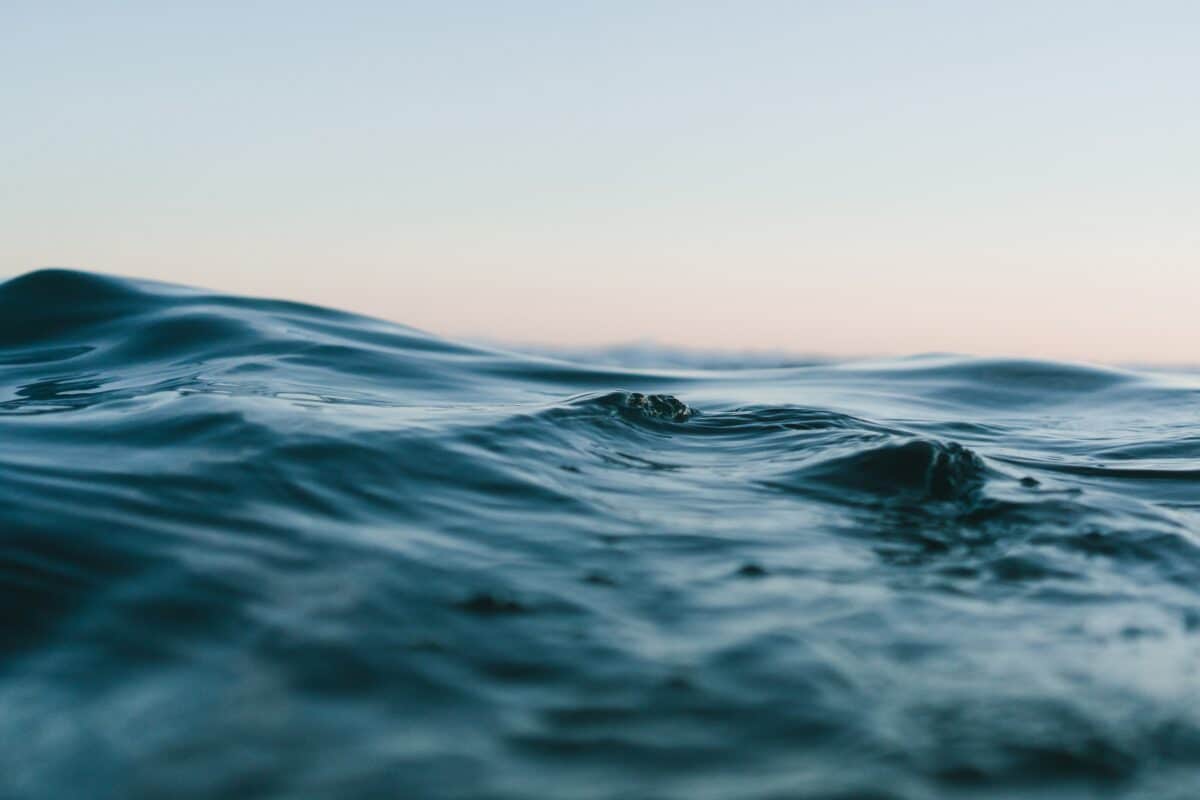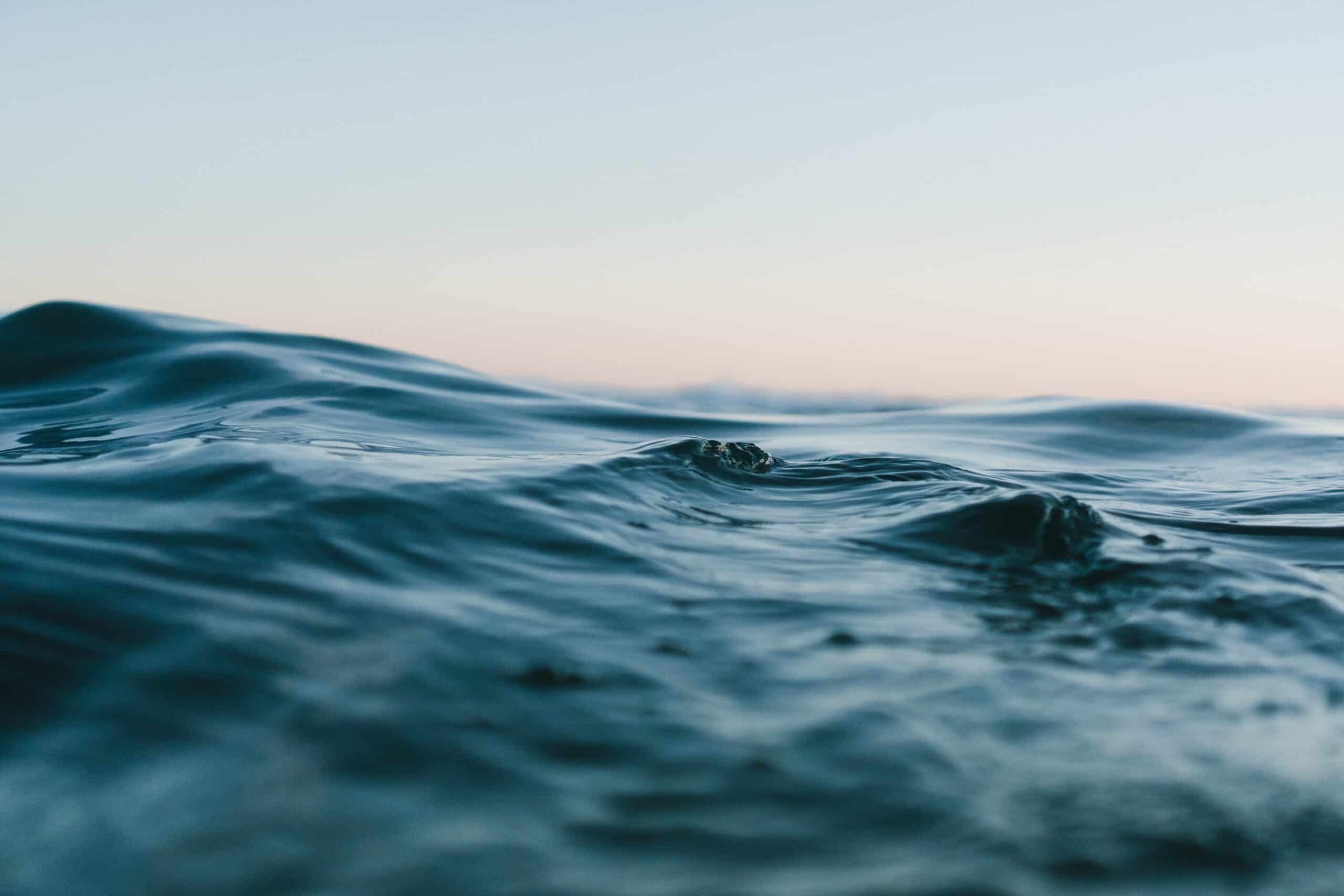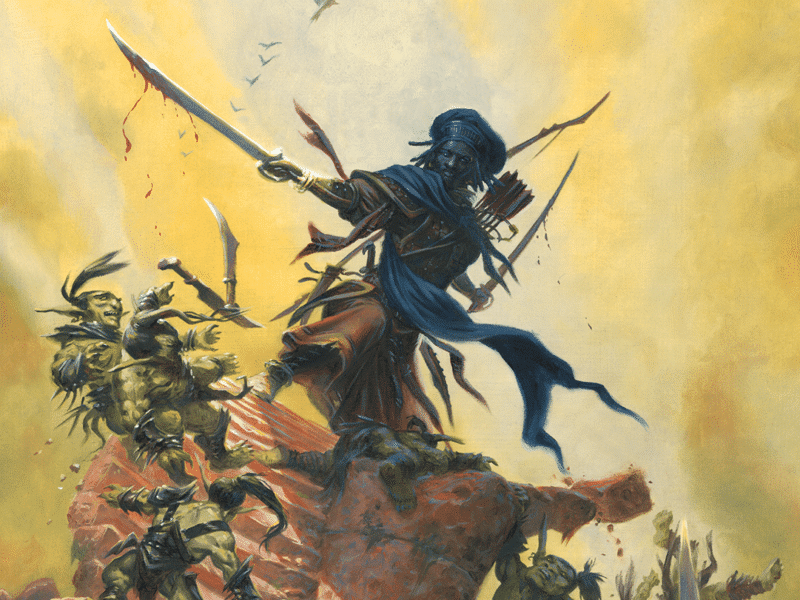We’re continuing this series about how to run adventures for Dungeons & Dragons while making the most of certain types of environments – and the time has come for a theme that’s almost as classic as that of woods and tunnels: the open seas!
But we’re not limiting ourselves to just seas. In this article, we’ll cover all kinds of water-based adventures, be they set on a still pond or a stormy ocean. So hoist yer sails, haul the anchor, and let’s sail onto the ideas!

Beauty
This is a brief (but nonetheless important) point so let’s get it out of the way: the sea is beautiful, and objectively so. There are few landscapes (or rather seascapes) that are so innately pretty as waves peppered with white crests and vast sunlit vistas of open oceans. Visit the nearest museum of classic art for a simple example. Notably, seas can be stunning no matter their temperament: a large placid lake can be as mesmerizing as a churning ocean in a storm, only in different ways. What’s more, given that we’re in a fantasy world, this kind of beauty can readily be magnified by a few notches to dial up the sense of wonder. Hence, it’s worth adding a few throwaway sentences that underline that the characters are travelling through an awe-inspiring scenery.
Weather
When travelling the seven seas, one might be exposed to just as many seasons in one day. Open waters can offer anything from dead calm and mirror-like surfaces to shrieking gales and raging, frothing waves that can smash the biggest galley to kindling, and any kind of weather in between.
This variety of conditions is something that a DM can use for framing or underscoring a scene in a D&D adventure, for example to provide a faint sense of atmosphere for a journey or an encounter, or to add further complications in a heated moment. Most of the time, mentions of the weather are best reserved for narration, when it’s useful to infuse a segment that describes the characters’ trip with a little flavour – drawn-out speeches about wind speeds and the appearance of the sea can quickly become boring or repetitive.
However, if a spell of nasty winds and huge waves happen to coincide with the attack of a kraken, that’s an altogether different beast! In this case, the rough weather becomes not only a suitable backdrop for the dramatic battle, but also an opportunity to make life a little more interesting for the characters. Fighting a colossal monster on land is one thing, but battling one from the deck of a ship is quite another – and clashing with a huge aquatic monstrosity when the aforementioned ship is being tossed around like a cat’s plaything by waves taller than the characters’ favourite inn is a really special event indeed. In the latter case, it’s worth emphasising exactly how wrathful the sea seems to be!
And, given that we’re playing Dungeons & Dragons, there’s always a risk that there’s a supernatural reason for the calamitous climate. Maybe the unfortunate weather is connected to the emergence of a magnificent monster so powerful that it can affect wind and water in its vicinity, or maybe the characters have insulted the wrong deity by failing to offer some kind of gift before setting out and are therefore being punished with torrential rain and brutal waves?
Navigation
The need to orient oneself on a sea is so classic that it’s worth including in a D&D adventure even if it doesn’t have a direct impact on the plot or the possibility to complete the quest. However, this need can also be a great way to let adventurers who have the right skills and tools shine for a moment, for example by letting failed checks or the absence of proficient characters result in that the ship is delayed or that the journey is otherwise complicated.
In addition, ending up lost on a big sea is also an efficient method for letting the characters discover new and unexpected things – islands with a few fun encounters such as long-lost secrets defended by traps, unknown inhabitants who will defend their home, or abandoned temples with strange powers, all of which can serve as intriguing side treks before the characters find their way back to the right course again.
Other alternatives include reefs that threaten the ship, but which also are home to lots of wrecks that might hide a treasure or two; banks of fog that conceal mysterious sights such as otherworldly vessels from entirely different planes that are in need of direction, curious portals to other dimensions that the characters might sail into by accident, or small islands with shrines to evil deities that still are worshipped by aquatic creatures, and so on.
Over the under
Bodies of water effectively enable two distinctly different types of modes: events that take place on a vessel that’s floating on the surface, and events that occur underwater while the characters are diving or moving around beneath the surface with the aid of other means. (Technically, one could argue that if an adventurer for some reason finds themselves on the surface but in the water, we’d be looking at even a third type of adventuring, but let’s not over-complicate things!)
This article mainly concerns threats and events that take place above the surface, but it’s more than likely that one or more adventurers might end up in the sea if their ship is attacked by a monster large enough to rock the boat violently, or a bloodthirsty band of pirates who chase or kick their opponents overboard. There’s also the possibility that part of a quest takes place underwater on purpose, and that the mission consists of a journey to and back from a specific spot where the characters need to get their diving gear out and brave the depths as they descend to explore a sunken temple or retrieve a lost treasure chest.
Any adventure that takes a D&D character into the depths of a sea will automatically raise the stakes for the characters, as their players will be well aware of the risks of drowning, and possibly the danger of predators that roam the darkness below the surface. And we haven’t even started to discuss the many other hazards that a sea in a fantasy setting might come with! There might be sentient, territorial and lethal creatures who dislike intruders and do all in their might to keep them at bay, there might be streams with magic powers that can trap even the strongest swimmer miles away. There might be areas where the water is utterly dark or poisonous, or beasts so huge that they swallow the adventuring party whole before they can react – and then they must continue their quest inside the belly of said beast, which is so large that it’s a dungeon in its own right.
Naval battles
This, of course, is the big one! Ship against ship, ships, or monsters! Single vessels and quick skirmishes or huge fleets clashing in major battles! Arbalests firing deadly spear-sized arrows, mages hurling sail-wrecking fireballs, and brave warriors swinging from one ship to another to engage the enemy in thrilling fights on slippery decks! Martial mayhem against (or rather on top of) a backdrop of roaring waves!
The sea is certainly a famed battlefield in its own way, and most people’s imagination will start to fire on all cylinders if you describe how the ships sound, smell and look as they race in towards one another. Fights like these can be kept simple by using ship maps placed adjacent to each other and just letting the characters (and their opponents) have at it – in other words, ignoring the events and parts that lead up to the actual clash between the characters and the NPCs (or monsters). However, there are so many other ingredients that can be thrown in to make these battles truly spectacular.
The conditions of combat
It can be tricky to keep track of everything that might be going on in a naval battle, but using the weather to complicate things is an easy trick if it doesn’t slow the game down too much. For example, what’s the weather like? Is there torrential rain that’s washing over the combatants while they’re fighting, forcing them to make checks not to fall overboard. Are there monsters rocking the boats and trying to shake the crew into the waves for a snack? Is it in the middle of the night, and the characters must rely on moonlight to see anything? Are the ships on fire, sinking, or breaking up? Or maybe they’re moving, and the characters have to make successful checks to keep the vessels sailing in the correct direction? It’s best not to overdo it unless you’re looking to create total mayhem and lots of dice-rolling (which is fine, of course, as long as that’s your intention), but you can be sure that adding some kind of dynamic condition is going to make a combat encounter more fascinating and tense.
Movement and speed
If you would like to ramp up the strategic challenge of a combat that takes place on water, and don’t shy away from the idea of learning some rules – official, third-party or homebrewed – for naval clashes, consider making the fight more complicated by forcing the characters to control their boat while they’re engaged in battle. For example, one or more characters might be required to handle a vessel’s behaviour in turbulent water while their comrades are doing their best to stave off a gang of pirates that threaten to overrun the boat. Or maybe the sails are being lashed by preposterously strong winds that blow the ships of heroes as well as villains off course all the time, resulting in that both sides must make repeated checks every round to get their ship so close to each other the fight can take place, with better rolls leading to advantageous positions (for example flanking another ship, maintaining position farther aware from reefs, and so on)
Different types of combat
Battles at sea can take many shapes and hues. For example, let’s say that the adventurers’ ship is being harangued by a band of persistent pirates and their shoddy but sturdy frigate. As there’s a great range of ranged attacks in Dungeons & Dragons, it’s obviously possible (and even likely) that the fight starts long before the two ships are anywhere near one another. Most characters will have access to ranged weapons with tremendous range, such as longbows and heavy crossbows, which can deal plenty of damage from afar. As a result, it’s probable that the air will be thick with arrows and bolts many rounds before the crows even can consider attempting to board the other ship. Beyond regular bows and crossbows used by normal-sized humanoids, we have armaments such as the arbalest – technically a massively oversized crossbow that fires equally massive spears.
Likewise, there’s a plethora of spells that can cause all kinds of damage from huge distances. Even the simple cantrip firebolt, which can be cast pretty much nonstop by characters who know it, might set a whole ship ablaze if the target’s crew isn’t prepared to deal with such attacks. Also, let’s not forget flying characters, who might zip around another ship and slice its sails to shreds, or rise into the sky holding a boulder (conveniently stored in the ship’s hold by a forward-thinking character) and drop the rock onto the deck of an enemy ship from a great height. One mighty crash, and the other ship has a new and urgent problem to deal with!
Once the ships are closer to one another, other weapons such as spears, javelins, and handaxes can come into play, and there are lots of forceful spells that have limited range that can be used at this point to wreak merry hell with the opposing crew and their vessel. There’s also the harpoon, which is handy if you want to make sure that the other side stays put and doesn’t try to sail off.
Once the ships are so close that their crews can cross the gap between them, it’s time for a classic toe-to-toe on the decks! This is a great time for a DM to be creative with checks and possibilities! Maybe the characters can use their environment to their advantage, for example by swinging on ropes to gain speed (attacks with opportunity), making daring leaps across rickety planks (bonus XP), cutting loose tied-up barrels so that they roll across the deck and knock down foes (a check to deal damage to enemies who fail saving throws), or even slicing a critical rope so that a sail crashes down onto a group of antagonists (an Intelligence check followed by an attack roll and saving throws). The options are as many as you can think of!
Let there be chaos on the waves
If the characters are of high levels, bring out the big guns! Have the ships orbiting one another in a giant whirlpool (reminiscent of a scene in a certain movie that you may have seen), let them be sloshed about on gigantic waves, or have a few krakens show up to make a seemingly straightforward encounter just a little trickier!
There’s a lot of fun that one can have when dialling up the chaos on an ocean, and there are lots of third-party products that help with interesting ideas, optional rules, special gear, and a host of new monsters, all custom-made for sea-themed encounters, adventures and campaigns.
Those were a few ideas for raising the stakes when running D&D adventures that take the heroes out on the sea! A good way to find inspiration is to watch old matinee or fantasy movies that take place on the waves (or even just a few scenes from the battles in them), as these usually are packed with fun and exciting moments! But most of all, make sure that the seafaring adventurers’ escapades are as riotous as the waters that they travel!







